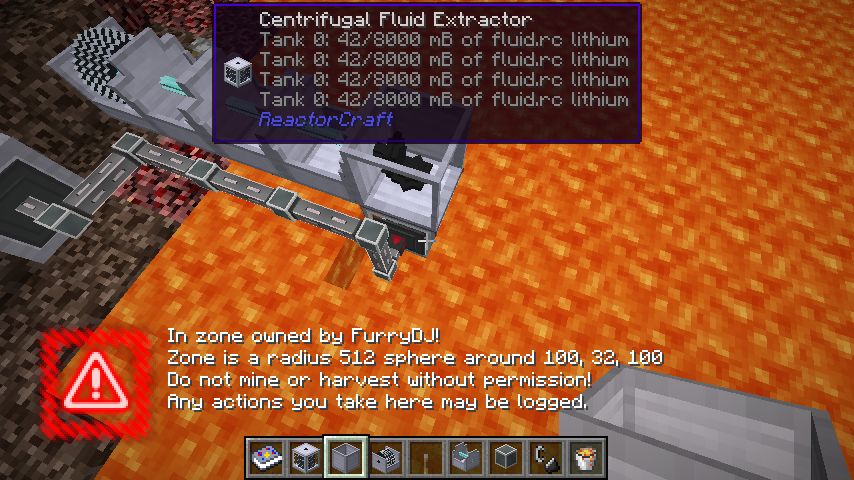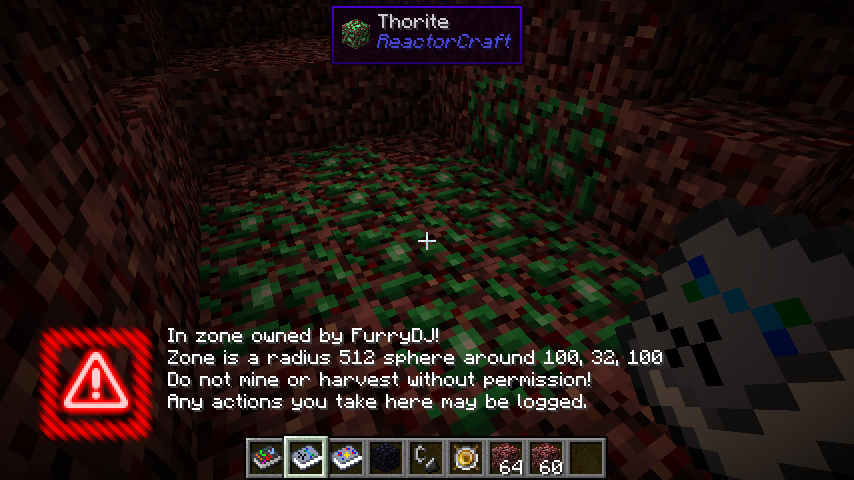I have been using his post as a checklist.

I do hope my recollection of how thorium reactors work is sufficiently accurate, then.
Some more notes, I made an error in my post regarding lithium; it is primarily found in naturally occurring volcanic brines (of which I can think of no in-game analogue), and in stone ores alongside other igneous mineral deposits. Given its volcanic origin and extremely low density, however, in an environment such as the nether, without any deposits of water for it to incorporate itself into, it is still likely that molten lithium would naturally rise to the surface of magma deposits and be mechanically separable from there. Also I like the idea (and subsequent technological challenges) of a machine that extracts something useful from nether magma.
As for the fluorides, based on some quick research, if we want to remain chemically accurate about how beryllium fluoride is produced, the process for extracting beryllium hydroxide from beryl (emeralds) is close enough to how the extractor works that a secondary output from emerald ore is plausible. Reacting beryllium hydroxide with ammonium bifluoride, then heating it to 1000C will produce beryllium fluoride, with ammonia, hydrogen fluoride and water as a byproduct. To get ammonium bifluoride, we need to react ammonia with hydrofluoric acid. Good, no new materials required so far.
condensed version:
ammonia + hydrogen fluoride = ammonium bifluoride
emerald ore -> extractor = beryllium oxide
ammonium bifluoride + beryllium oxide + 1000C = beryllium fluoride + hydrogen fluoride + ammonia + water
For lithium fluoride, I am not entirely sure what compound natural lithium is most commonly bound up in, but mixing most common compounds of lithium with hydrofluoric acid seems to produce lithium fluoride, woo.
Once we have both beryllium fluoride and lithium fluoride, they must be mixed together at a ratio of 2:1 LiF and BeF2, and melted at 459C to produce FLiBe, the
Liquid
Fluoride part of
Liquid
Fluoride
Thorium
Reactor.
As for the structural alloy used for the reactor itself and most of the piping, some simplification for the sake of gameplay might have to be used. The Molten Salt Reactor Experiment used Hastelloy-N, an alloy of about 70% nickel, 16% molybdenum, 7% chromium, 5% iron and trace amounts of cobalt, tungsten, silicon, manganese and carbon. Introducing 7? new elements just for one part of the mod seems excessive. Pure carbon theoretically works until it starts to crack, but for the sake of simplicity I would recommend not bothering and simply making the LFTR core out of bedrock, and using already-existent bedrock pipes for this purpose.
The last two things that might require some creativity are how to actually turn the produced heat into energy, and how process the salt mixture in a realistic fashion. I believe the original ORNL Molten Salt Reactor Experiment did not actually bother utilizing the heat it produced, since it was only a test reactor, and theoretical designs are
somewhat complicated, involving multiple steps of heat exchanging before getting to the part involving turbines. As for salt (re)processing, ignoring all the complex chemistry and simply sending the dirty salt through a centrifuge might have to do: if nuclear scientists have yet to fully figure this step out, I don't have much of a chance myself.



